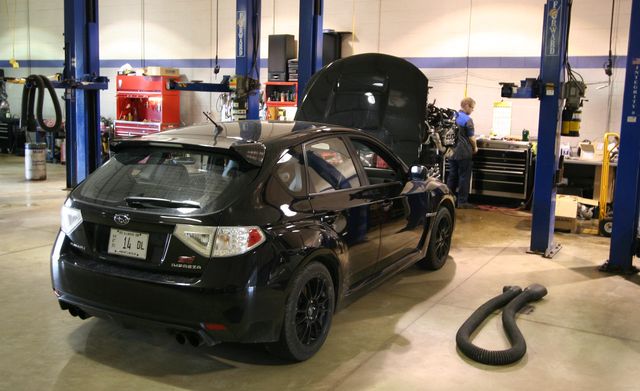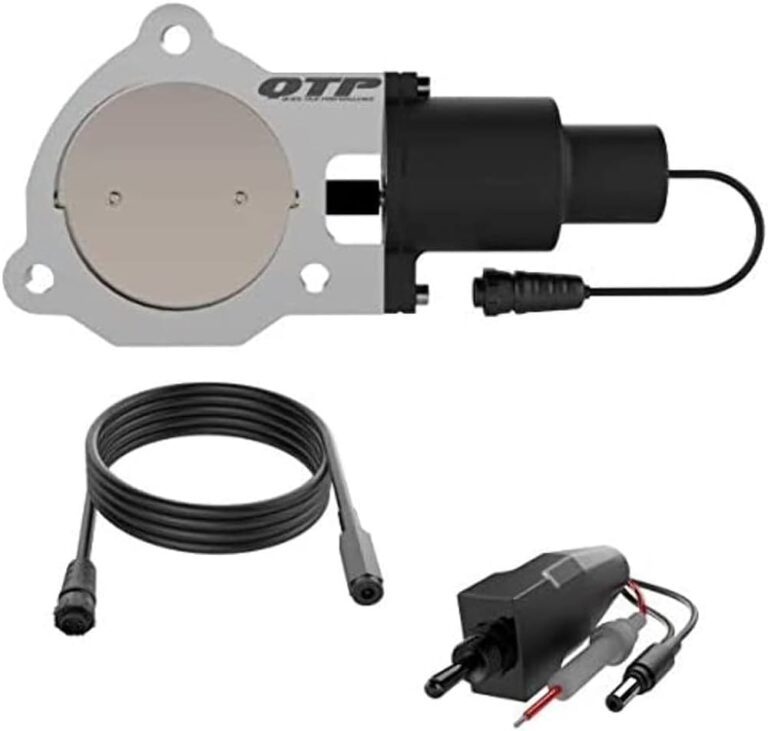Unlocking the Power: History of Catalytic Converter Evolution
The history of the catalytic converter dates back to the 1950s when it was first developed for automobile use. Invented by Eugene Houdry, this emissions control device became mandatory in the United States in 1975 to reduce pollution and combat environmental concerns.
It works by converting harmful gases into less harmful substances, thus reducing the emission of pollutants into the atmosphere. Since then, catalytic converters have become an integral part of modern vehicles, playing a crucial role in reducing air pollution and ensuring compliance with emission standards worldwide.
Today, these devices are widely used in gasoline and diesel engines, helping to create a cleaner and healthier environment.
Evolution Of Automotive Emissions Control
History of Catalytic Converter
Evolution of Automotive Emissions Control
Understanding the Need for Emission Control
Air pollution has become a significant concern due to its detrimental impact on the environment. The evolution of automotive emissions control has played a crucial role in addressing this issue. The catalytic converter, in particular, has emerged as an effective technology to reduce harmful emissions.
In the early days of automobiles, there was little awareness about the impact of vehicle emissions on air quality. However, as industrialization progressed, the need for emission control became apparent. Governments worldwide started implementing regulations to limit pollution from vehicles.
The catalytic converter, introduced in the 1970s, became a significant breakthrough in emission control technology. This device, installed in the exhaust system of vehicles, contains catalysts that facilitate the conversion of harmful gases into less harmful ones through chemical reactions.
Efforts to improve catalytic converters have been ongoing, resulting in more efficient and environmentally friendly designs. Advancements in catalyst materials and design have led to increased durability and better performance.
Today, catalytic converters are mandatory in almost all internal combustion engine vehicles. They have become an integral part of emission control systems, significantly reducing pollutants such as nitrogen oxides, carbon monoxide, and hydrocarbons.
The history of catalytic converters showcases our commitment to combat air pollution and protect the environment. However, further advancements in emission control technology are still needed to address the ongoing challenge of reducing vehicle emissions and minimizing their environmental impact.

Credit: www.ducati.com
The Catalyst For Change: Going Green With Catalytic Converters
htmlCatalytic converters have played a pivotal role in reducing harmful emissions and making vehicles more environmentally friendly. These innovative devices are designed to convert harmful pollutants in exhaust gases into less harmful substances through a process known as catalytic conversion. By leveraging the power of various chemical reactions, catalytic converters are able to transform harmful gases into less harmful ones, ultimately minimizing the impact on the environment. Catalytic converters operate through a complex system of catalysts, including precious metals like platinum, palladium, and rhodium. These catalysts facilitate the necessary chemical reactions, allowing the converter to effectively convert pollutants into more benign substances. The science behind catalytic conversion is fascinating, as it involves intricate mechanisms and reactions that occur within the catalyst itself. Overall, the history of catalytic converters highlights the significant role they have played in improving air quality and reducing pollution. From their invention in the 1950s to their widespread implementation in modern vehicles, catalytic converters have been instrumental in promoting greener and more sustainable transportation.
Unleashing The Power: Key Milestones In Catalytic Converter Evolution
|
Unleashing the Power: Key Milestones in Catalytic Converter Evolution The history of the catalytic converter is a remarkable journey of innovation and environmental progress. It all began with the first catalytic converter, which marked a major turning point in the automotive industry. This technological breakthrough paved the way for advancements in catalytic converter technology, bringing us from two-way to three-way converters. At its inception, the first catalytic converter introduced a vital component to vehicle emissions control systems. This pioneering device helped reduce harmful pollutants, such as carbon monoxide, nitrogen oxides, and hydrocarbons, emitted by internal combustion engines. Advancements in catalytic converter technology led to the development of two-way converters, which focused on reducing carbon monoxide and hydrocarbon emissions. However, it was the introduction of three-way converters that brought about a significant breakthrough. With the addition of palladium as a catalyst component, these converters became capable of reducing all three major pollutants simultaneously. This groundbreaking innovation propelled catalytic converters to new heights of effectiveness. Today, catalytic converters continue to evolve with ongoing research and development. The power of palladium and other catalyst components ensures that these devices remain vital in minimizing the impact of vehicles on the environment. |
Facing Challenges: Overcoming Constraints In Catalytic Converter Design
htmlCatalytic converter design poses various challenges that need to be addressed for optimal performance. One such challenge is achieving an optimal oxygen storage capacity. This capacity ensures efficient conversion of harmful emissions, such as carbon monoxide and nitrogen oxides, into less harmful substances like carbon dioxide and water vapor. Engineers are continuously working on innovative methods to tackle this issue, such as incorporating advanced materials with enhanced storage capabilities.
Tackling The Issue Of Optimal Oxygen Storage Capacity
Engineers have developed techniques to improve the oxygen storage capacity of catalytic converters. These include utilizing specialized catalyst formulations and engine management systems that optimize the air-fuel ratio. Additionally, advancements in catalyst coating technologies improve surface area and enhance the catalytic reaction, resulting in better oxygen storage and conversion efficiency.
Durability And Longevity: Engineering Solutions For A Longer Lifespan
Catalytic converters face harsh operating conditions, such as high temperatures, chemical reactions, and mechanical stress. To ensure their durability and longevity, engineers employ sturdy catalyst substrates that resist thermal degradation and structural damage. Furthermore, heat shielding techniques and efficient cooling systems help to prevent overheating, which can affect the performance and lifespan of the converter.
Balancing Performance And Cost: The Trade-offs In Catalyst Selection
When selecting catalyst materials, engineers must carefully balance performance and cost considerations. Factors such as activity, stability, and availability influence the choice of catalyst. Precious metals like platinum, palladium, and rhodium are commonly used due to their exceptional catalytic properties. However, the availability and high cost of these metals drive the need for alternative materials, which offer a balance between performance and affordability.
Innovations Beyond The Road: Catalytic Converters And Environmental Impact
htmlThe history of catalytic converters dates back to the 1950s when they were first introduced as an essential component of automotive engines. These devices have come a long way since then, as they have proven to be instrumental in reducing air pollution and addressing environmental concerns. Catalytic converters are not limited to road vehicles; they find wide applications in various industries and have the potential to shape a cleaner future.
Industrial Applications: Catalytic Converters In Power Plants And Manufacturing
Industries, such as power plants and manufacturing facilities, heavily rely on catalytic converters to address emissions generated during their operations. These converters effectively convert harmful gases and pollutants into less harmful substances, contributing to improved air quality in the surrounding environment. By incorporating catalytic converters in industrial applications, companies are taking proactive measures to mitigate their environmental impact.
Off-road Emissions: The Role Of Catalytic Converters In Reducing Pollution
Catalytic converters play a crucial role in reducing pollution caused by off-road vehicles, such as construction machinery and farming equipment. These converters employ chemical reactions to convert harmful exhaust gases into less toxic emissions that are released into the atmosphere. By effectively managing off-road emissions, catalytic converters contribute to sustainable practices in various sectors.
Futuristic Perspectives: The Potential Of Advanced Catalytic Converter Technologies
With advancements in technology, the future of catalytic converters looks promising. Researchers and engineers are exploring advanced catalyst formulations, innovative designs, and alternative materials to enhance their performance and durability. The potential of advanced catalytic converter technologies lies in their ability to further reduce emissions, improve fuel efficiency, and expand their application across different industries.
Reducing Pollution, Maximizing Efficiency: The Evolving Landscape Of Emission Standards
Reducing Pollution, Maximizing Efficiency: The Evolving Landscape of Emission Standards
Strengthening Regulations: From Euro Standards to Worldwide Harmonized Light Vehicles Test Procedure (WLTP)
The history of the catalytic converter is deeply intertwined with the pursuit of cleaner emissions and greater fuel efficiency. It all started with the introduction of Euro emissions standards in the 1990s, which aimed to set limits on pollutants emitted by vehicles. These standards were implemented progressively, with each new standard reducing allowed emissions further. However, the journey towards cleaner vehicles didn’t stop there.
In recent years, the introduction of the Worldwide Harmonized Light Vehicles Test Procedure (WLTP) has further strengthened emissions testing. WLTP focuses on real-driving emissions, providing a more accurate reflection of a vehicle’s performance in real-world conditions. This standardized testing procedure has unveiled the true emissions levels of vehicles, leading to a push for even stricter regulations.
Government initiatives and incentives have played a vital role in promoting cleaner technologies. From grants and tax incentives to subsidies for electric vehicles, governments worldwide have encouraged the adoption of greener vehicles. These efforts aim to reduce pollution, improve air quality, and create a more sustainable future.
Catalytic Converter Breakthroughs: Innovations For Sustainability
The history of the catalytic converter is filled with remarkable advancements that have contributed to the sustainability of our planet. Pioneering research has been instrumental in exploring new catalyst materials and designs. The quest for more efficient and effective catalytic converters has led to the development of novel technologies that significantly reduce harmful emissions.
One such breakthrough is the integration of electrification and hybrid technology. By combining these two approaches, vehicles can achieve cleaner emissions and improved fuel efficiency. This synergy allows for a reduction in harmful pollutants and a more sustainable transportation system.
Another critical aspect of catalytic converter innovation is the implementation of data-driven optimization. Leveraging artificial intelligence and advanced algorithms, researchers can fine-tune the performance of catalytic converters. This optimization process leads to enhanced efficiency and longevity, further contributing to a greener environment.
| Pioneering Research | Electrification and Hybrid Technology | Data-Driven Optimization |
|---|---|---|
| Exploring new catalyst materials and designs | Complementary solutions for cleaner emissions | Leveraging artificial intelligence for enhanced performance |
The Road Ahead: Challenges And Opportunities In Catalytic Converter Evolution
Automotive history has witnessed significant advancements in catalytic converter technology. As we look towards the road ahead, there are both challenges and opportunities that lie in the evolution of catalytic converters.
The rise of electric vehicles (EVs) presents a unique challenge for catalytic converter manufacturers. With the increasing popularity of EVs, the demand for traditional internal combustion engine vehicles could decline. However, this change in the automotive landscape also opens up opportunities to develop innovative and efficient catalytic converters that align with the requirements of hybrid and plug-in hybrid vehicles.
Another important aspect in the evolution of catalytic converters is recycling and sustainability. Efficiently managing the end-of-life of catalytic converters is crucial to reduce waste and environmental impact. By implementing proper recycling practices, valuable metals found in catalytic converters can be extracted and reused, contributing to a more sustainable future.
Efforts within the industry, along with collaborations between researchers and manufacturers, are paramount in driving breakthroughs in catalytic converter technology. Collaborative endeavors enable the exchange of knowledge and ideas, fostering innovation and advancements in design, materials, and manufacturing processes.
| Challenges: | – Rise of electric vehicles | – Potential decline in demand for traditional vehicles |
| Opportunities: | – Development of innovative catalytic converters for hybrid and plug-in hybrid vehicles | – Recycling and sustainability |
| Key Factors: | – Collaboration between industry and researchers | – Knowledge exchange and innovation |
Frequently Asked Questions Of History Of Catalytic Converter
When Did They Start Using Catalytic Converters?
Catalytic converters were first used sometime in the 1970s to reduce harmful emissions from vehicles.
Why Are Old Catalytic Converters Valuable?
Old catalytic converters are valuable because they contain precious metals like platinum, palladium, and rhodium. These metals have high market demand for various industries. Recycling old converters helps in recovering these valuable metals, reducing the need for new mining and preventing environmental pollution.
What Old Cars Have Catalytic Converters?
Some old cars that have catalytic converters include models from the 1970s and onwards. Examples include the Chevrolet Camaro, Ford Mustang, and Toyota Corolla. It’s important to check the specific year and model of the car to determine if it has a catalytic converter.
How Did The First Catalytic Converter Work?
The first catalytic converter worked by using a catalyst to convert harmful gases into less harmful ones. When exhaust gases passed through the converter, chemical reactions occurred, transforming pollutants like carbon monoxide into carbon dioxide and nitrogen oxide into nitrogen and oxygen.
Conclusion
The catalytic converter has played a pivotal role in reducing vehicle emissions and improving air quality. Over the years, it has undergone significant advancements, from its humble beginnings in the 1950s to the sophisticated technology we see today. By converting harmful pollutants into less harmful substances, this ingenious device has contributed to a healthier and cleaner environment.
With ongoing research and development, we can expect further improvements in catalytic converter technology, ensuring a more sustainable future for generations to come.







